 Search for Flights
Search for Flights
 Search for Hotels
Search for Hotels
 Check Exchange Rates
Check Exchange Rates
 Check the Weather
Check the Weather
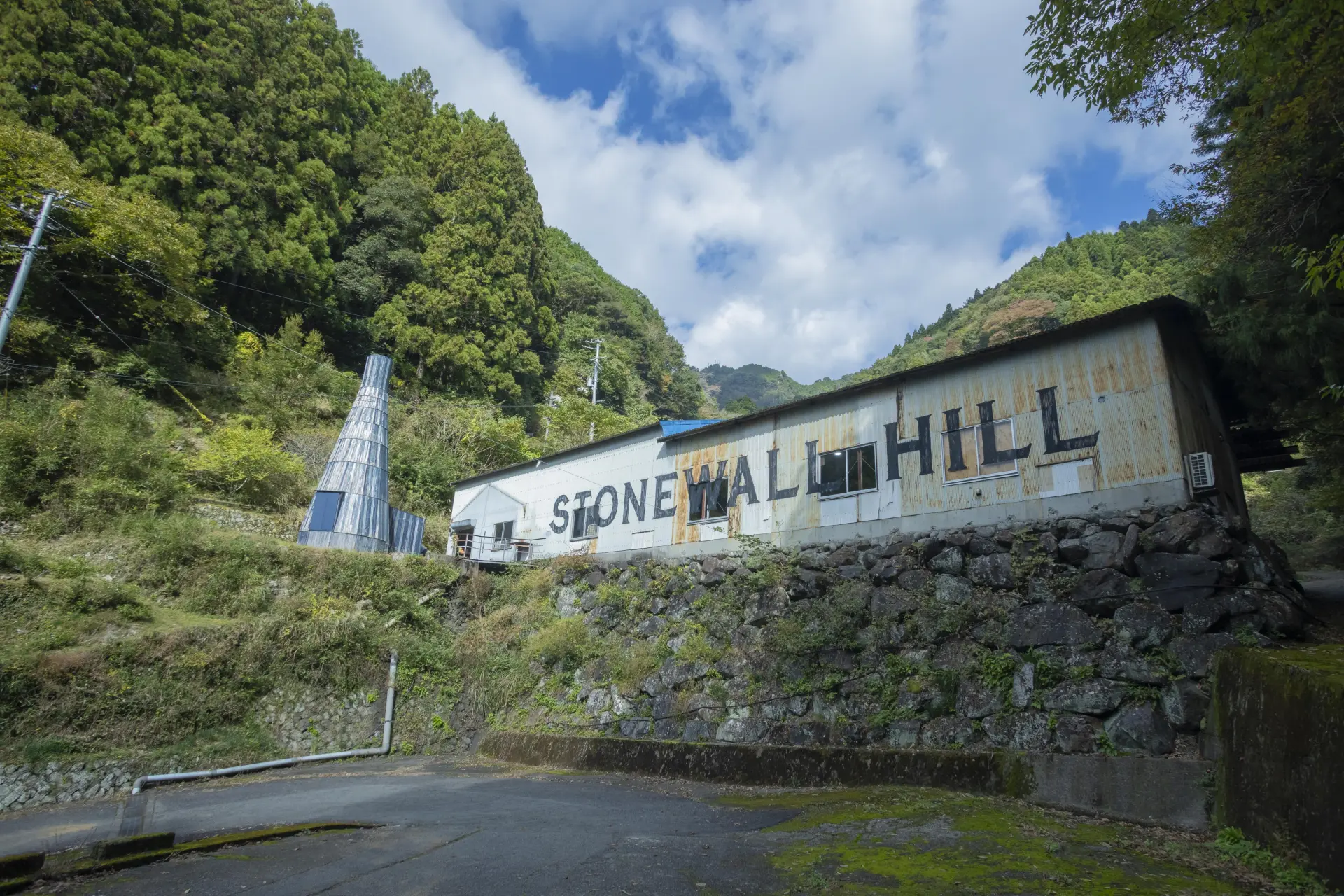
Tokushima: A Journey into Slow Living in the Mountains of Tokushima
Last update
The southeastern mountains of the Shikoku Mountain Range, Kamikatsu Town in Tokushima Prefecture. This town was once called a "marginal village" due to depopulation. However, since the 1980s, the town has been pioneering efforts to create new value and revitalize its community.
One of its defining initiatives is the "leaf business," where elderly residents gather and ship seasonal leaves and flowers, known as tsumamono, that are used to beautifully decorate Japanese cuisine. Another transformative effort is the "Zero Waste Declaration" announced in 2003, which aims to minimize waste and eliminate garbage. These initiatives have breathed new life into the region.
Kamikatsu is home to forward-thinking establishments such as the Zero Waste Center, dedicated to sustainable resource utilization, and a brewery that repurposes local and surplus ingredients to craft unique beers. The charm of this town lies not only in its reliance on advanced technology but also in its successful coexistence with traditional Japanese life.
This journey invites you to experience the slow-paced, authentic lifestyle of Kamikatsu’s residents while embracing a future built on sustainability.
Table of Contents
DAY1
7:30 – Depart from Osaka with a Rental Car
Rent a car in Osaka and set off for Tokushima. Enjoy a scenic three-hour drive toward your destination.
11:00 – Discovering a Sustainable Town: A Zero Waste Craft Beer Brewery Tour & BBQ Lunch
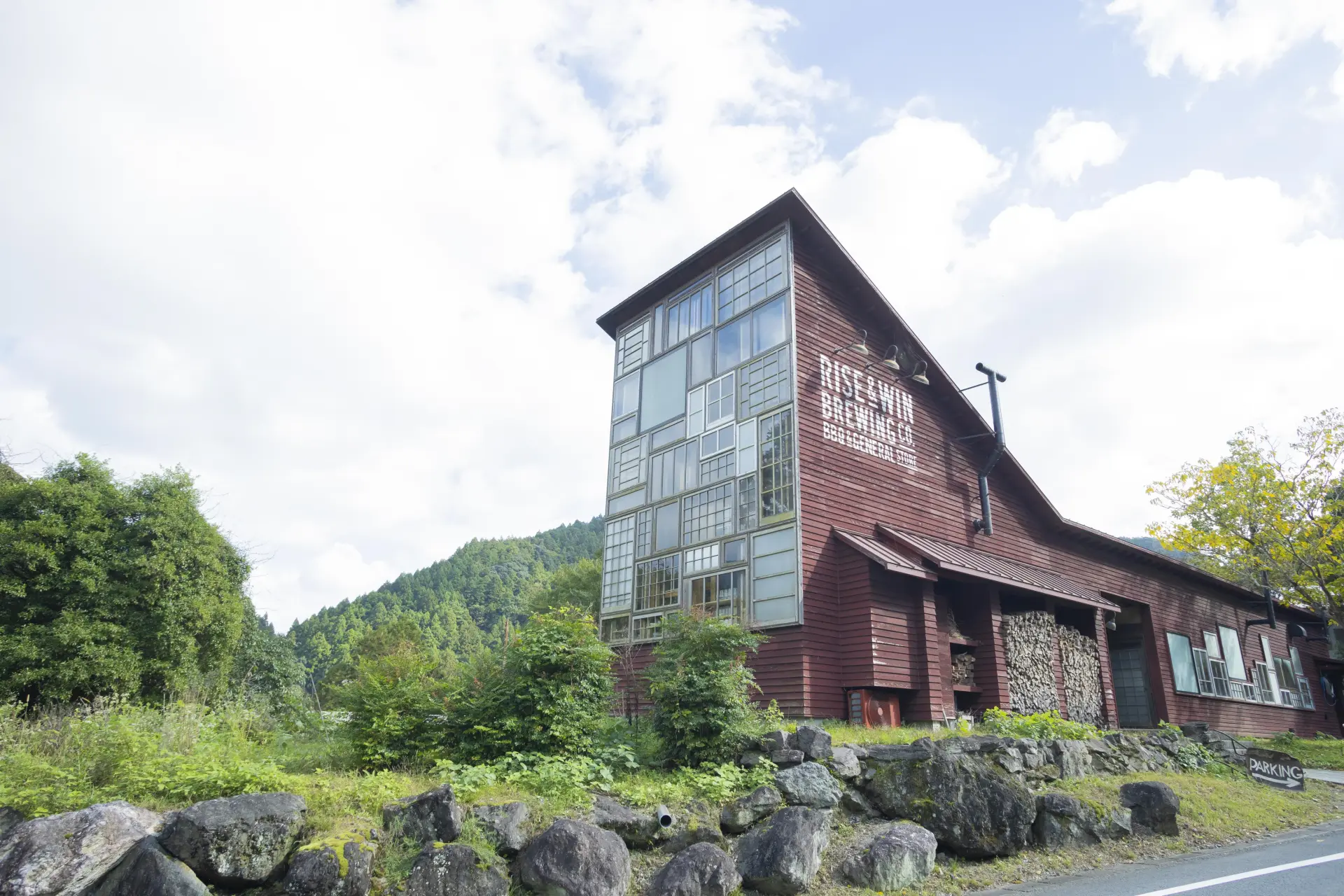
RISE & WIN Brewing Co. BBQ & General Store, the symbolic brewery. It was built using reclaimed materials and repurposed fittings from Kamikatsu. Each window has a unique shape, and the chandelier made from empty bottles is stunning.
As the urban landscape of Osaka transitions into the coastal scenery of Hyogo, the journey takes you across the Akashi Kaikyo Bridge, the world’s second-longest suspension bridge, and then over the Onaruto Bridge, where the famous Naruto whirlpools churn the waters below. Once past these landmarks, you arrive in Tokushima.
From the city center, a 40-minute drive into the mountains brings you to Kamikatsu. At the entrance to this eco-conscious town stands RISE & WIN Brewing Co. BBQ & General Store, a brewery dedicated to the ideals of zero waste. After checking in at the distinctive red building, hop back into the car for a short 15-minute drive to STONEWALL HILL, a former sawmill that has been repurposed into a brewery.
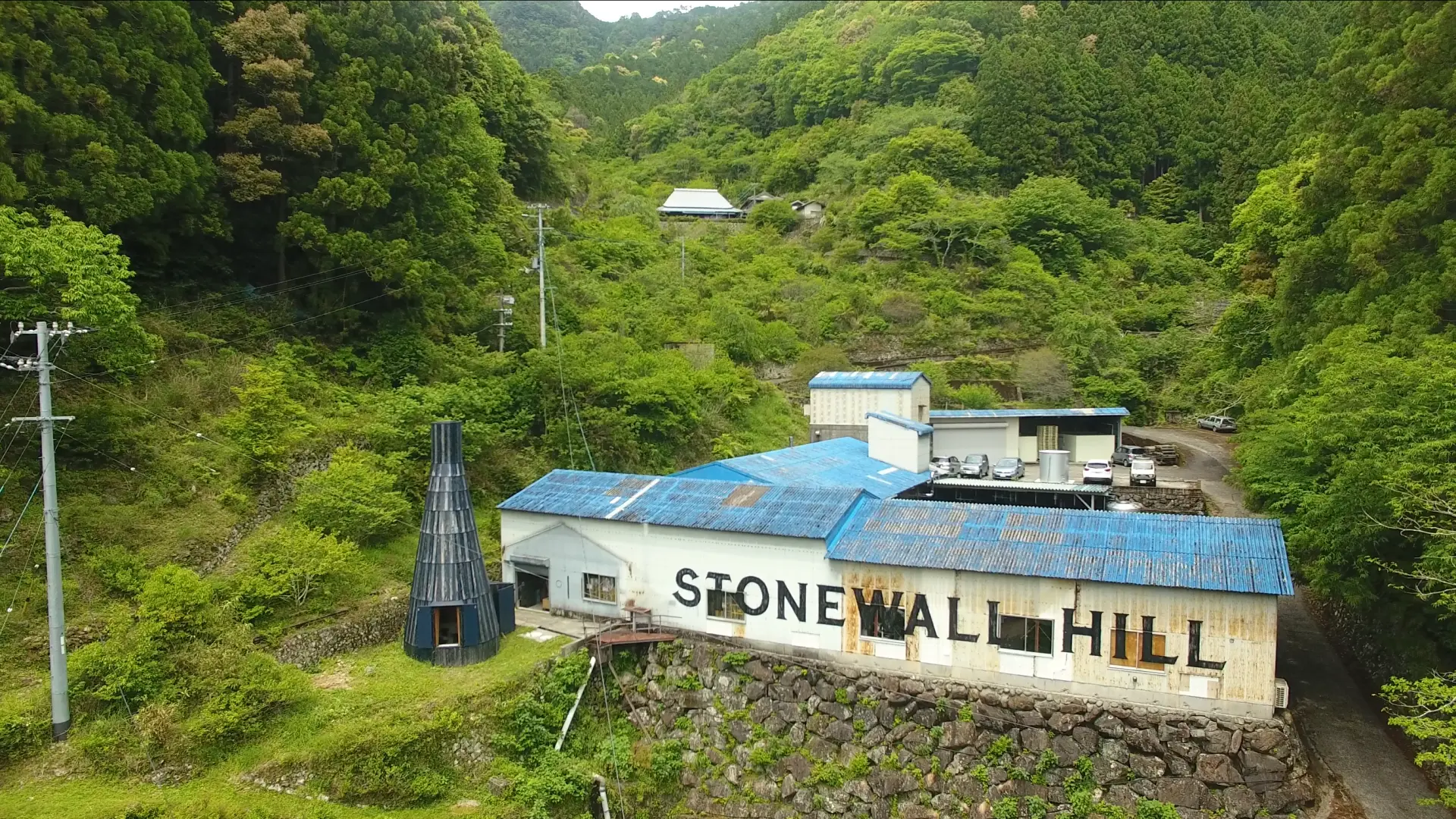
A brewery that utilizes the vast grounds of a former lumber mill.
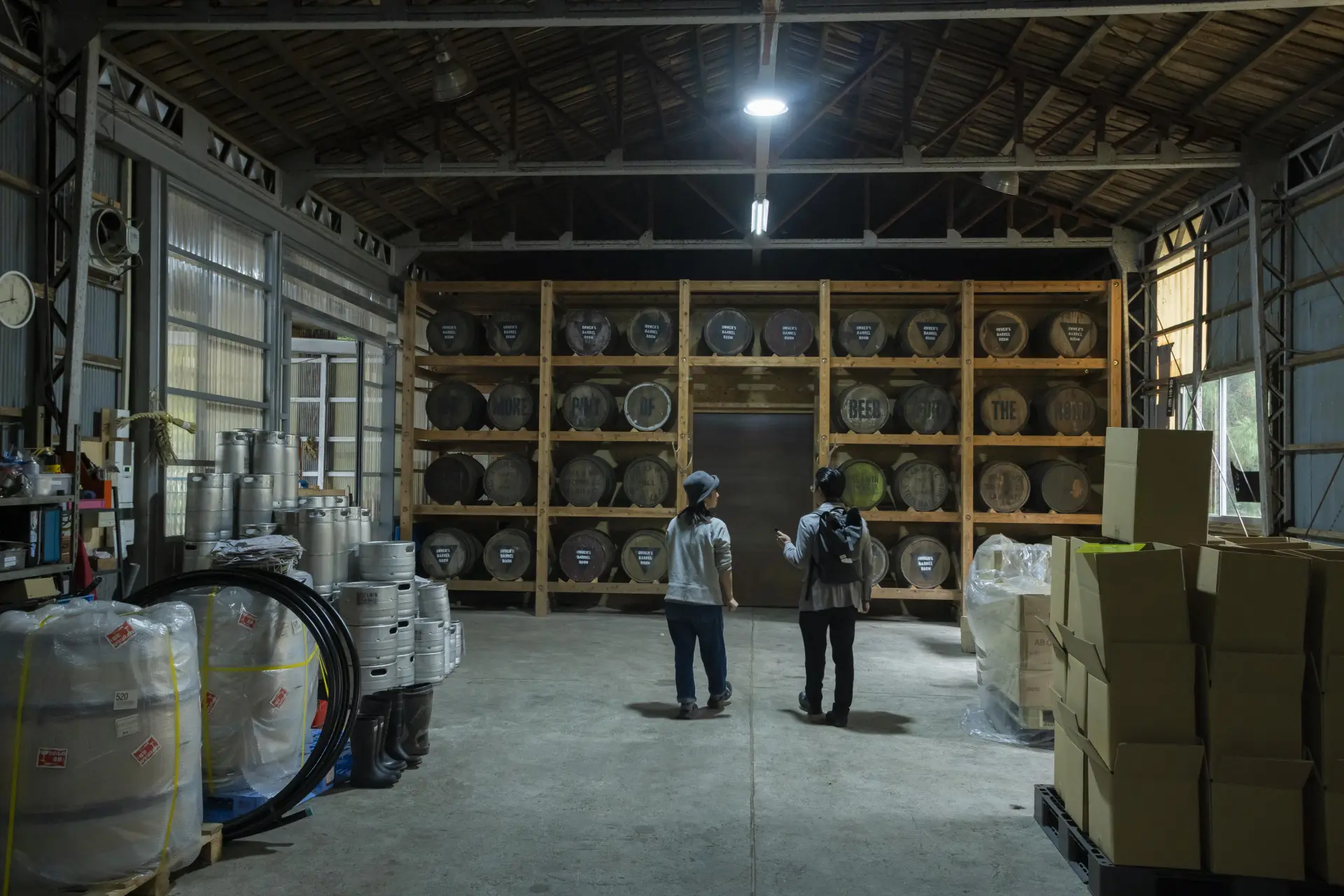
Inside the brewery, a lecture on beer brewing provides insight into the craft.
Here, Kamikatsu’s pristine water is used to craft a variety of unique beers. Notably, the brewery incorporates food waste—such as imperfect produce and spent coffee grounds—as flavoring elements in its beer-making process.
It also engages in barrel aging, an uncommon method for beer, using wooden casks that previously housed wine or whiskey. These barrels impart rich depth to the beer, and once used, they are returned to their original producers, completing an upcycling cycle where beer-infused barrels contribute to the aging of whiskey and other spirits.
At first, the thought of drinking beer made from surplus ingredients might raise some doubts. However, after hearing the brewers' passionate stories, seeing the meticulously maintained brewery, and experiencing the beautifully designed tasting room, any hesitation quickly disappears. The moment you take a sip of freshly brewed beer, curiosity transforms into sheer delight—this is a flavor like no other.
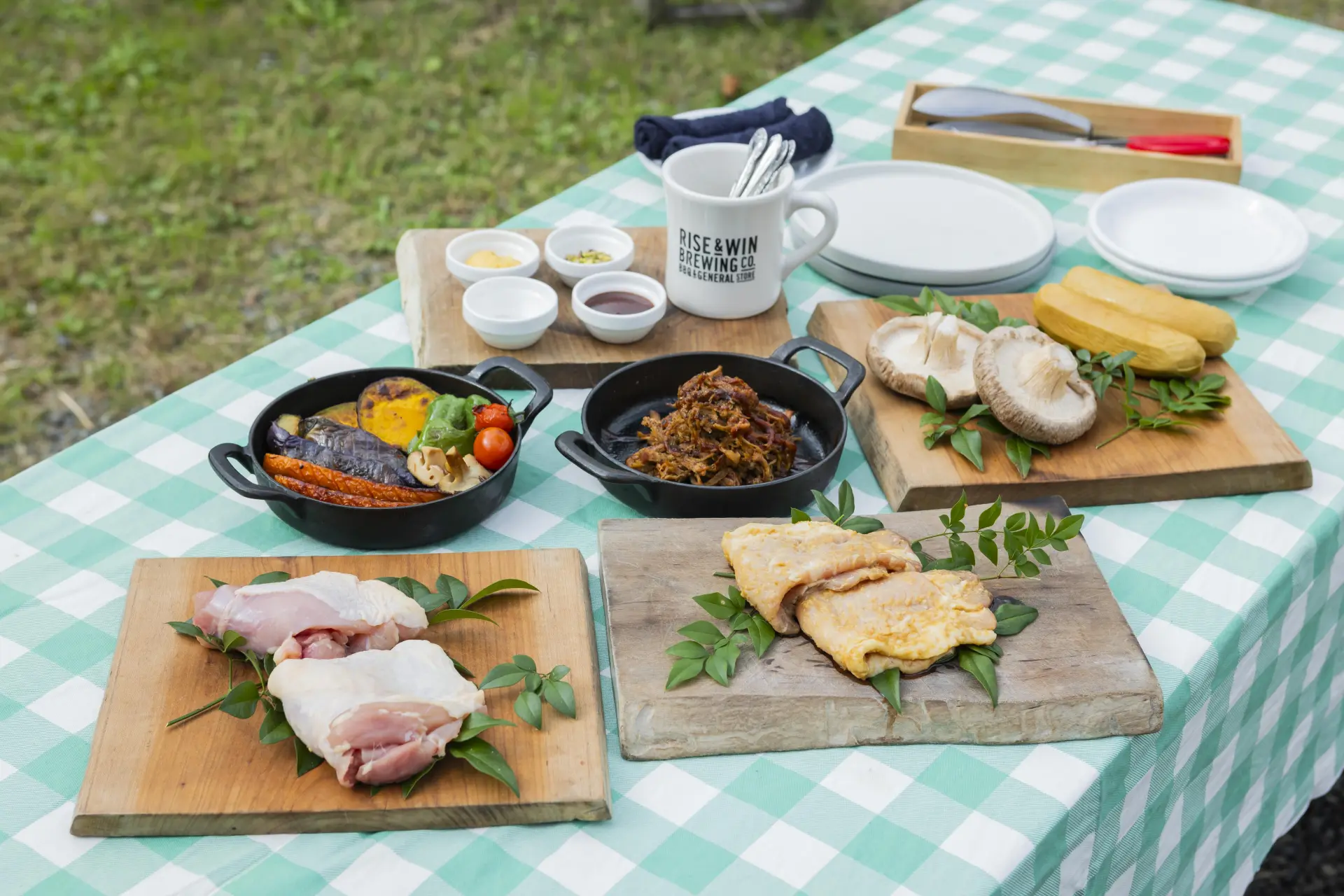
A BBQ featuring carefully selected ingredients from Tokushima. The rich flavors of grilled vegetables and Kamikatsu’s specialty shiitake mushrooms offer a unique farm-to-table experience.
After the brewery tour, it’s time for a BBQ feast in the garden of RISE & WIN Brewing Co. BBQ & General Store! Enjoy fresh vegetables from Kamikatsu and Awa chicken from Tokushima, all grilled to perfection over charcoal. Naturally, the BBQ is paired with freshly brewed craft beer. For designated drivers and those under 20, soft drinks are also available.
Inside the store, bottled craft beers are available for purchase, with limited-edition seasonal varieties on offer. Some are set aside for later enjoyment at the accommodation, while others are taken home as souvenirs before heading to the next destination.
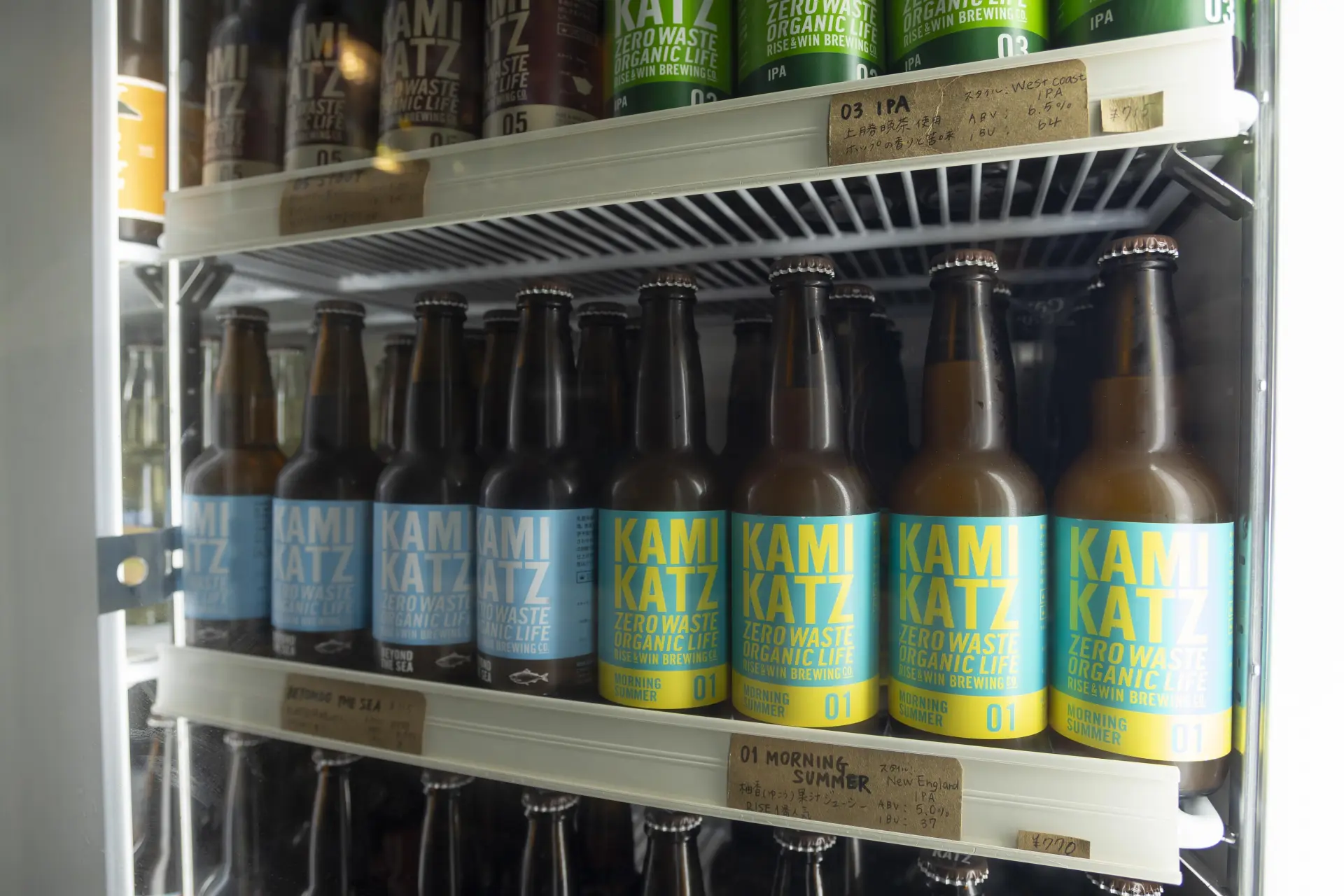
A diverse selection of beers, including IPAs, Weizens, and Pilsners, with a variety of flavors.
For those wanting to extend their stay, RISE & WIN Brewing Co. BBQ & General Store also offers lodging options, including cabins and campervans. The brewery tour, with its breathtaking scenery and exceptional beer, leaves such an impression that staying the night here becomes an enticing idea for the next visit.
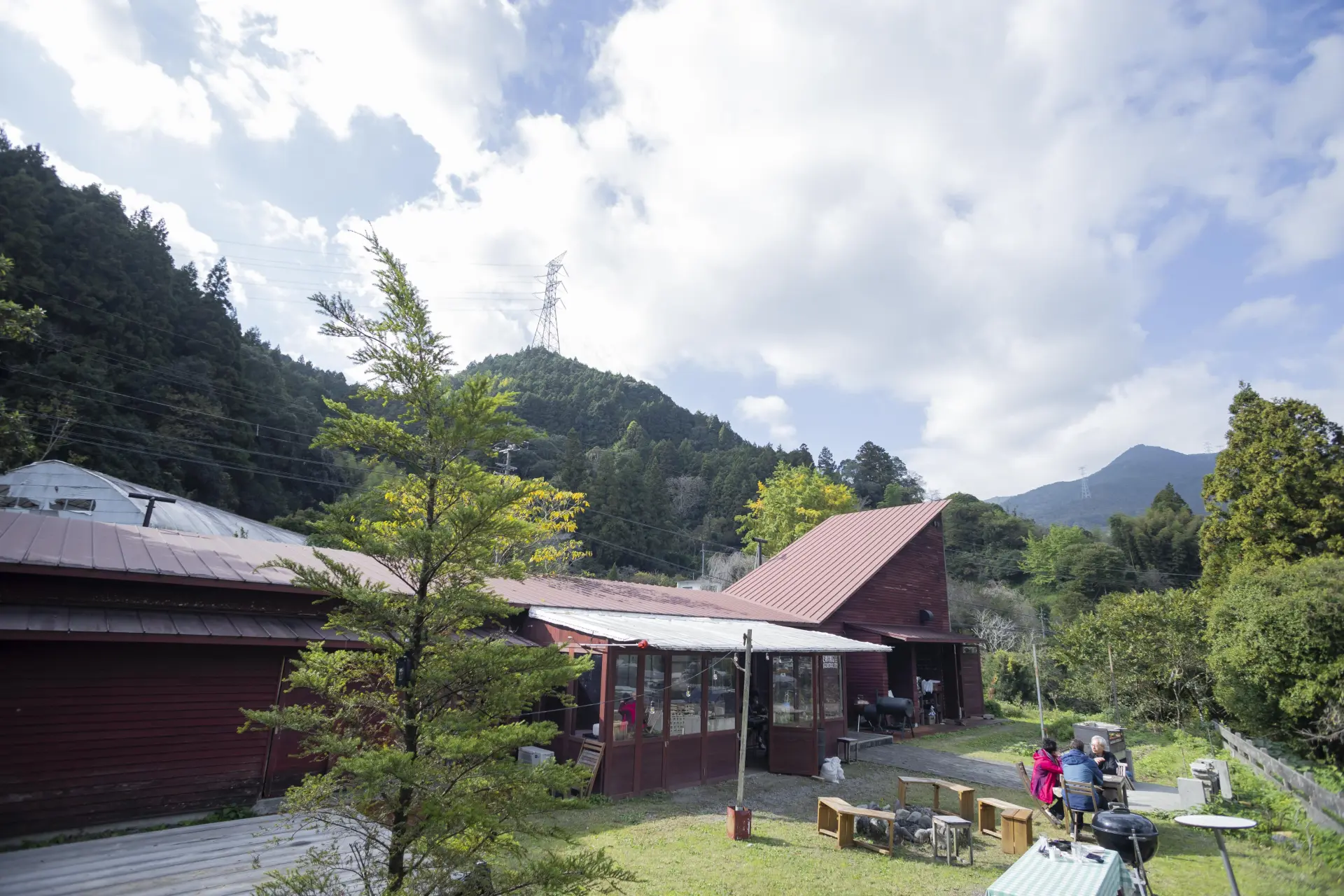
An open garden with an unobstructed view of the sky and Kamikatsu’s lush greenery. Enjoying BBQ in the fresh air adds to the experience.
Basic Information
- Name in Japanese
- RISE & WIN Brewing Co. BBQ & General Store
- URL
- URL
16:00 – Experiencing the Beauty of Japanese Cuisine: A Walk Through Irodori Mountain & a Special Dinner at Tsukinoyado
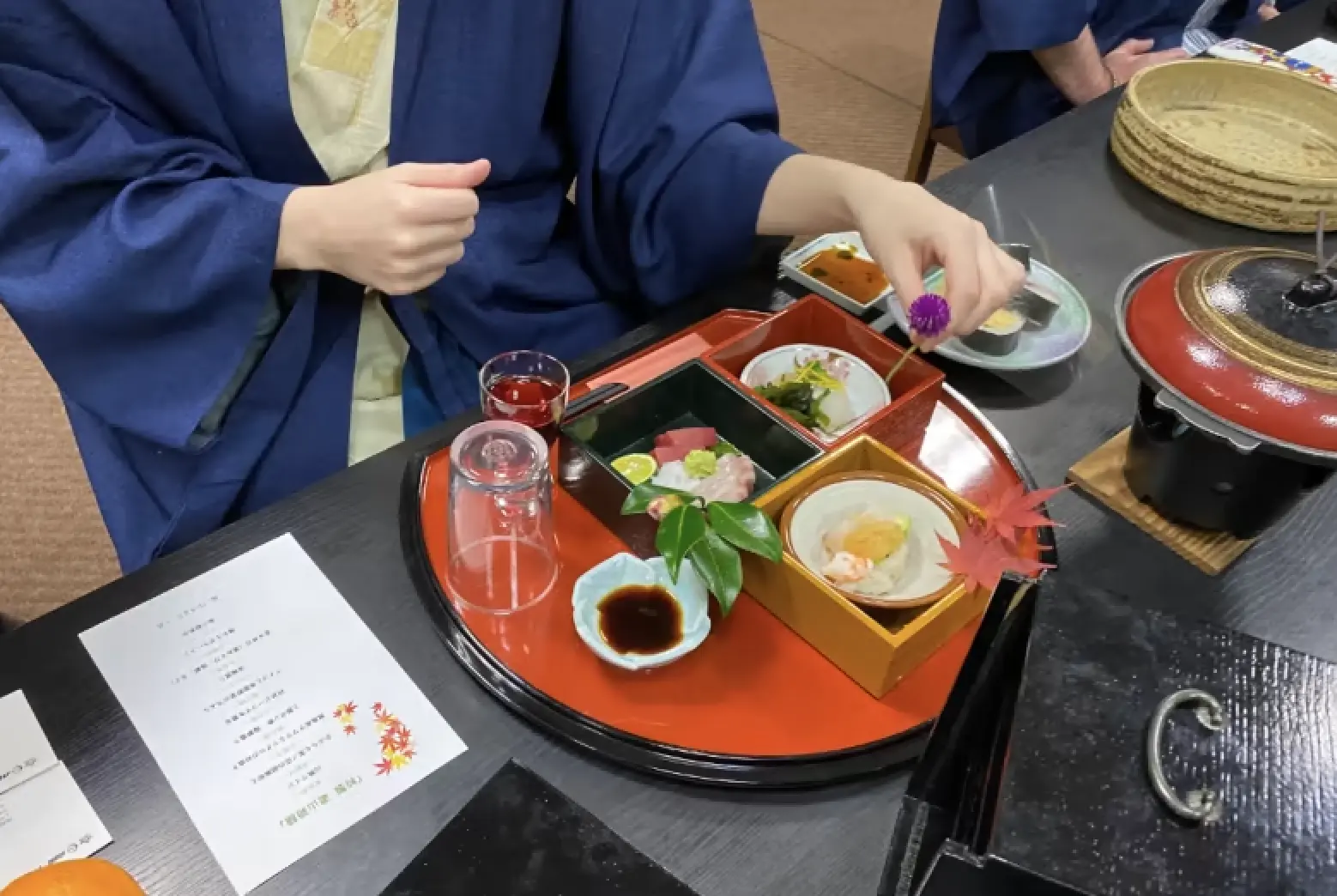
Decorating a traditional jubako box with seasonal foliage from Kamikatsu’s fields and mountains, experiencing the aesthetics of Japanese cuisine.
In traditional Japanese cuisine, particularly kaiseki, seasonality and visual presentation play a crucial role in hospitality. One essential element in achieving this aesthetic is tsumamono—decorative leaves and flowers used to enhance the dining experience. Kamikatsu is renowned as a major producer of these delicate natural garnishes, cultivated and harvested by the town’s elderly residents.
This leaf business, which began over 30 years ago, has since become a vital industry, allowing seniors to remain active in their community. Today, it is widely recognized under the Irodori brand, with its products being used in high-end restaurants across Japan, including in Kyoto and Tokyo.
A short 10-minute drive from the brewery brings you to Tsukinoyado, your accommodation for the night. After checking in, the staff guide you to a scenic gorge near the inn.
The next experience takes place around Irodori Bridge, a suspension bridge over a gently flowing mountain stream. Strolling through the forest, serenaded by birdsong and dappled in soft sunlight, guests learn about Kamikatsu’s local industries while gathering their own selection of beautiful leaves and flowers.
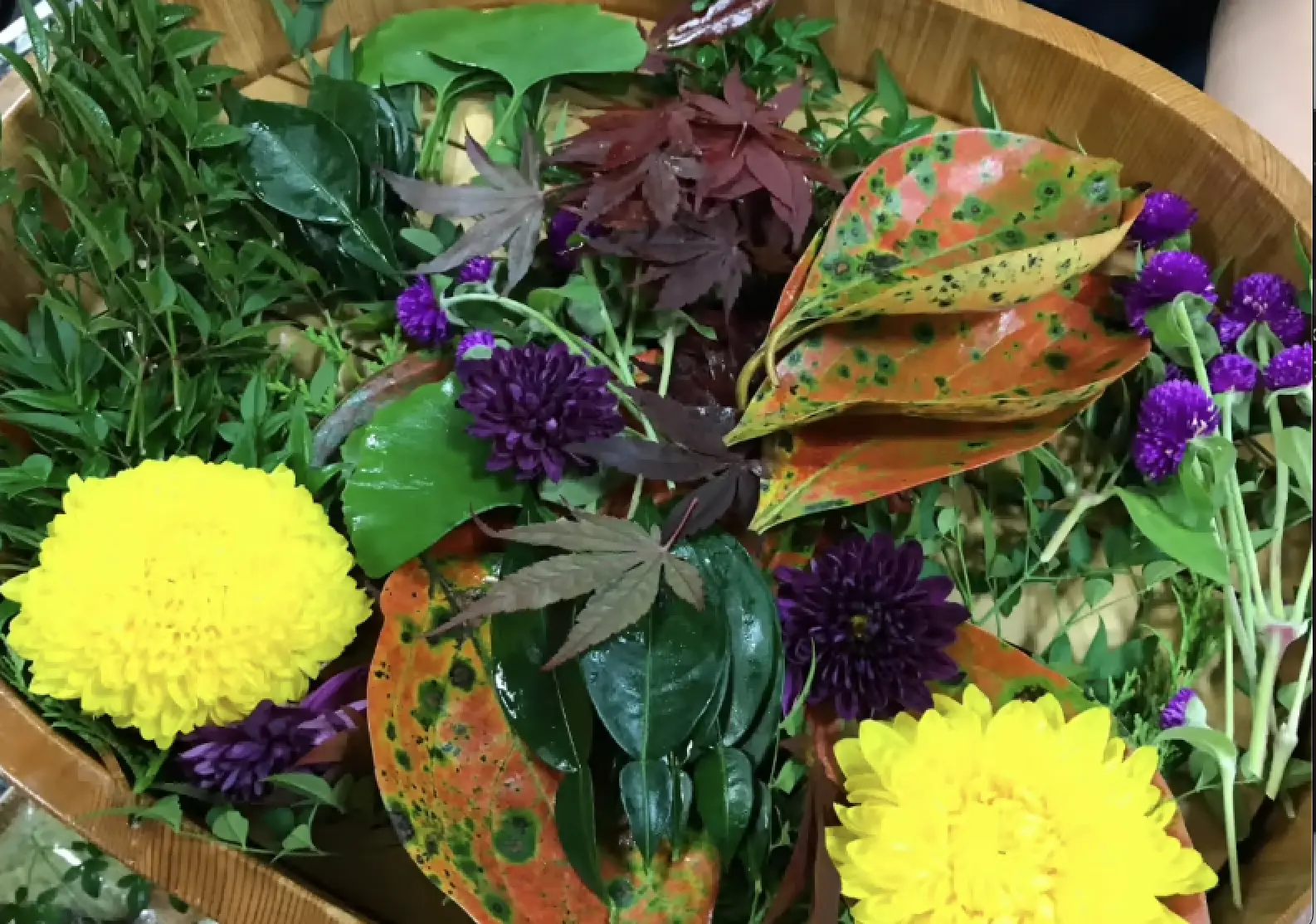
Collecting seasonal wildflowers to adorn the meal while strolling through Kamikatsu’s rich natural surroundings, using personal creativity.
Returning to the inn, a special dinner awaits—a traditional Tokushima meal served in small, elegant Yuzanbako stacking boxes. Inspired by Japan’s culinary heritage, these beautifully arranged dishes reflect the essence of washoku. Before enjoying the meal, guests use the tsumamono they collected to decorate their dishes, immersing themselves in the artistry of Japanese cuisine. The simple act of arranging these natural elements transforms the meal into a personal and delightful culinary experience.
Basic Information
- Name in Japanese
- 月ヶ谷温泉「月の宿」
- URL
- URL
DAY2
9:00 – Experiencing Japan’s Slow Life in a Mountain Hamlet: Satoyama Experience Tour at Yaeji Hanano-tei & Kamikatsu Kayabuki School
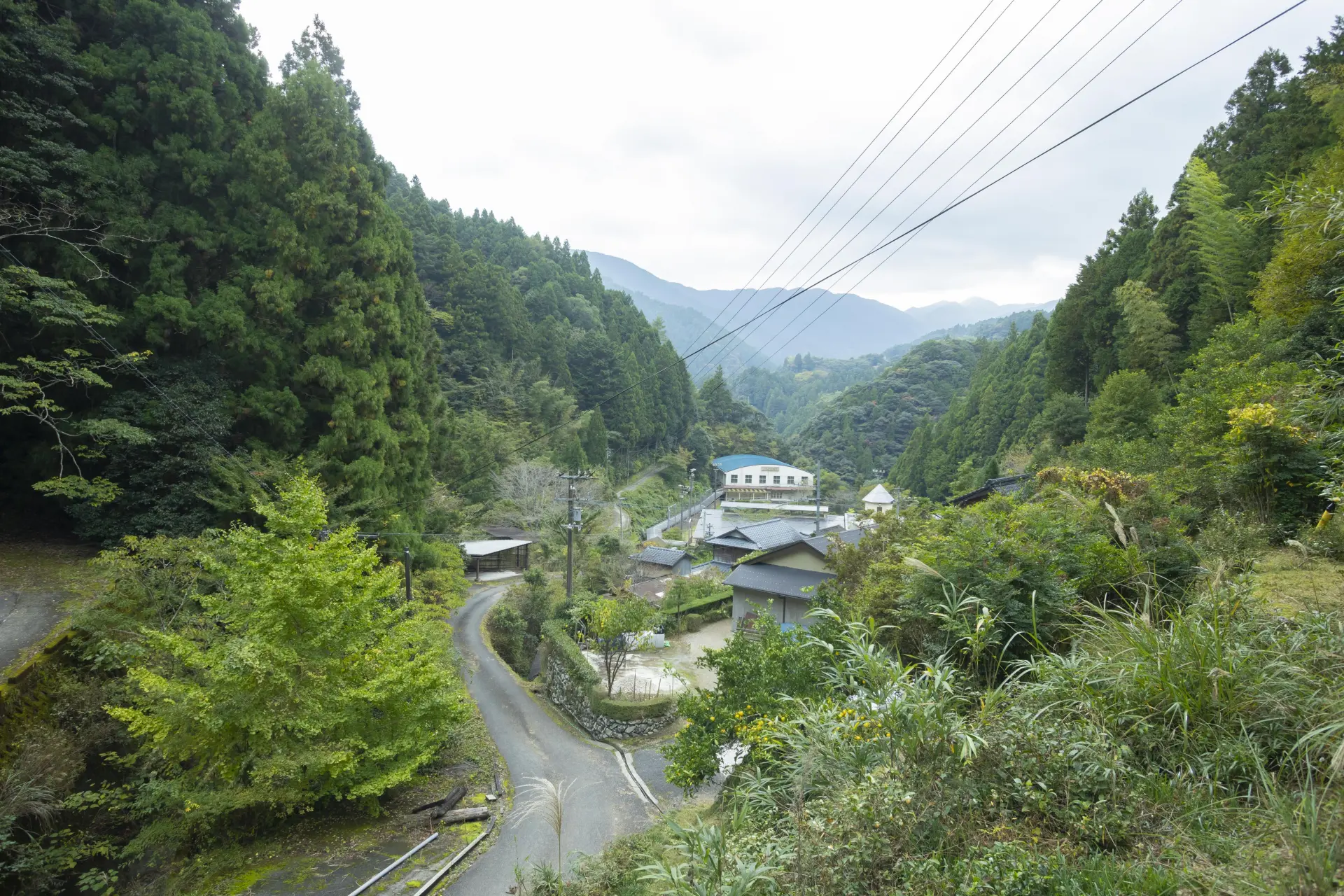
Driving through Kamikatsu, where nature and human life coexist in harmony, on the way to the next destination
After a restful night at Tsukinoyado, enjoying a lavish Japanese breakfast and a soothing hot spring bath, it was time to check out. With some reluctance, we left the inn and drove 20 minutes deeper into the mountains to Yaeji Hamlet—a rare place where Japan’s rural landscape remains untouched by modernization.
The first thing that comes into view is a striking sight: the tanada, or terraced rice fields, arranged in cascading steps along the slopes. In Yaeji, these terraces take on a distinctive rounded shape, making them a unique feature of the landscape.
Life in this remote hamlet follows the rhythms of nature. As the sun sets, smoke rises from the chimneys of homes where firewood is used to heat baths, and the glow of lights against the deep darkness creates an almost mystical scene. Wandering through the hamlet, time seems to slow down, and a thought lingers—Is this really modern-day Japan? The experience offers a profound realization of how Japan’s traditional way of life was built upon mindful simplicity and meticulous care.
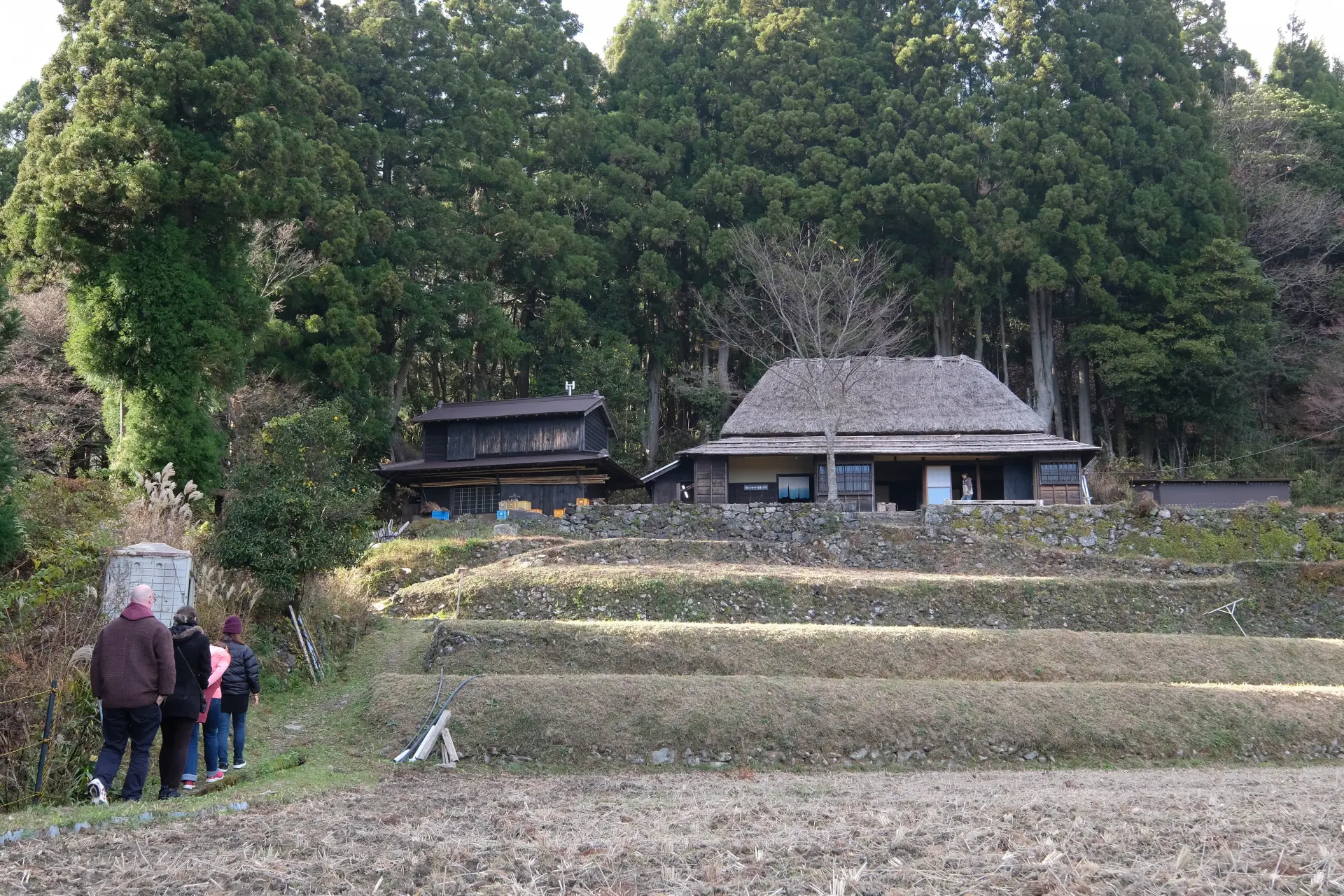
Yaeji Hamlet, a living remnant of Japan’s rural landscape, untouched by urbanization
The walk through the hamlet leads to Hanano-tei, a historic house perched on a hill overlooking the rice terraces. Once abandoned, this house was restored in 2011 with a thatched roof, making it the only surviving kayabuki (thatch-roofed) home in Kamikatsu. After taking a short break on the engawa (wooden veranda), the next experience begins—a hands-on introduction to Japan’s traditional lifestyle. One of the highlights is using a ishi-usu (stone mill), an old-fashioned tool that was once essential for grinding soba and wheat. Today, it is rarely seen outside of folk tales. Instead of grains, visitors use the mill to grind coffee beans. Unlike electric grinders that complete the task in seconds, using a stone mill requires steady, patient effort. The experience of slowly turning the heavy millstone is both meditative and deeply satisfying, offering a quiet moment of mindfulness.
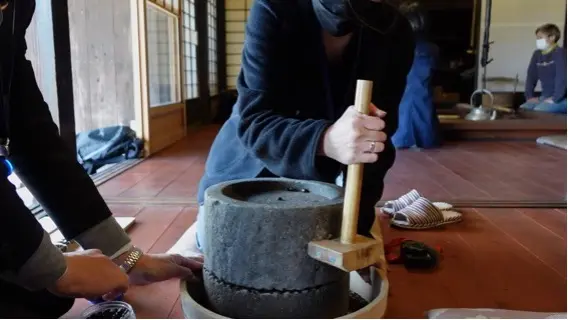
Using an old-fashioned stone mill as a coffee grinder. The effort put into grinding makes the coffee taste all the more special.
Basic Information
- Name in Japanese
- かみかつ茅葺き学校
- URL
- URL
13:00 – Discovering Tokushima’s Local Flavors at Roadside Station "Kurukuru Naruto"
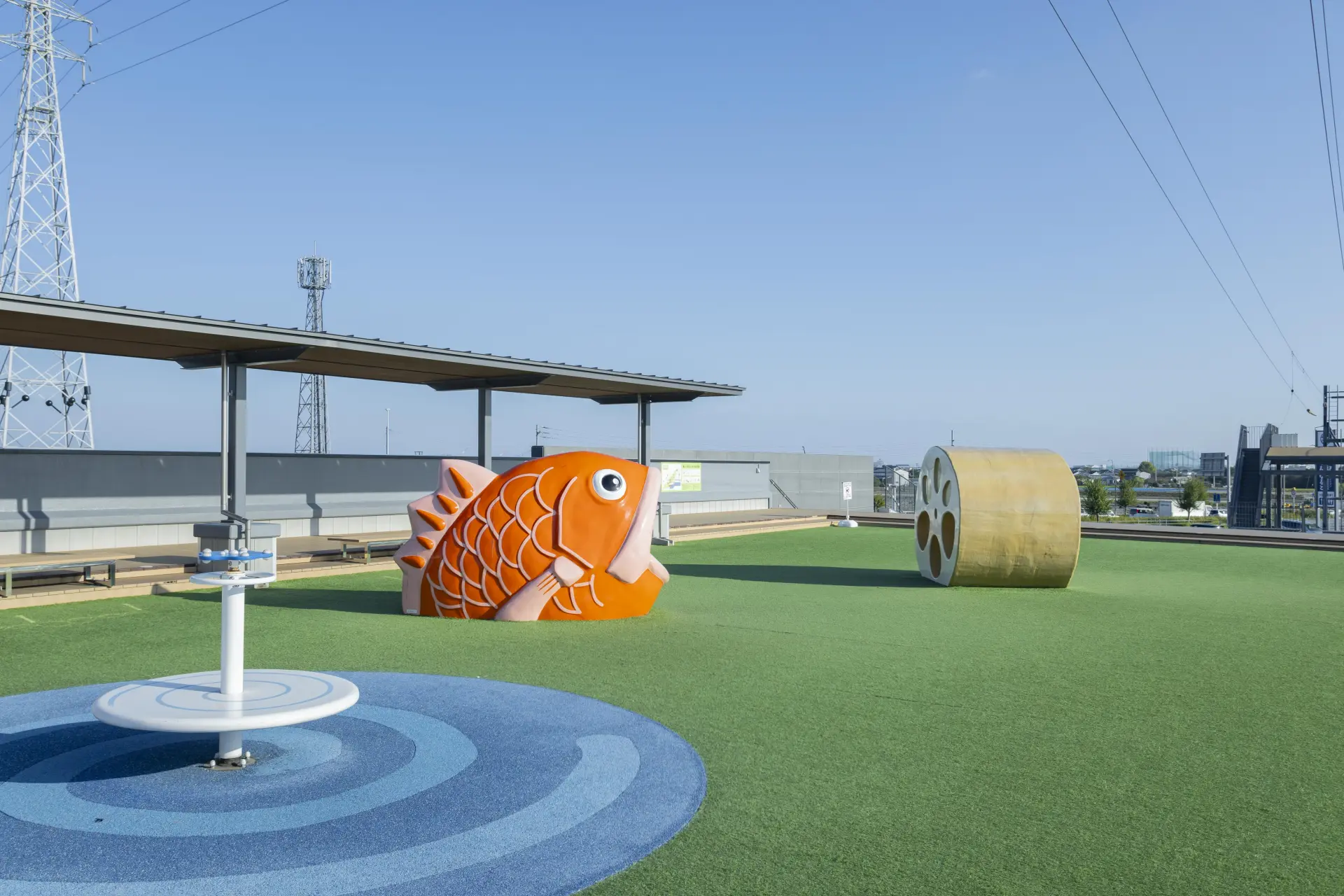
The second floor of the facility features attractions for families, including playground equipment and a zipline (advance reservations required online).
After a leisurely morning in Yaeji, the journey continues toward Tokushima’s city area.
Kurukuru Naruto, a roadside station, is designed as an interactive food-themed park under the concept:"Bringing smiles to everyone—sharing the deliciousness of Naruto with the world."
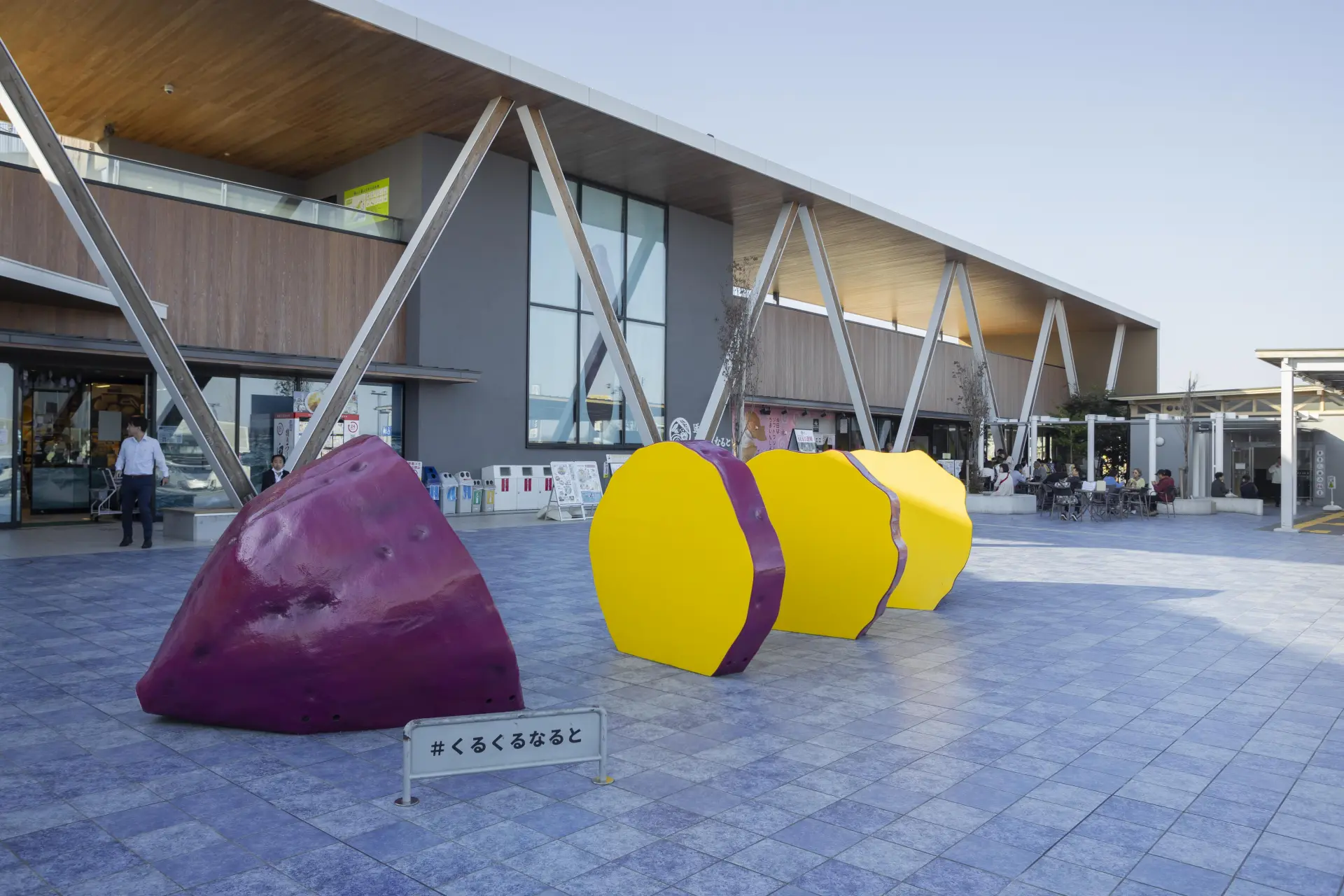
A large monument of Tokushima’s famous Naruto Kintoki sweet potato stands in front of the roadside station, making it a popular photo spot.
The name "Naruto" comes from the famous Naruto Whirlpools in the strait between Tokushima and Awaji Island. These swirling tides are one of Tokushima’s iconic sights, and their name has been used for various local products, including agricultural goods.
The facility showcases a wide selection of goods crafted by Tokushima’s farmers and artisans, attracting both tourists and locals alike. It also features attractions such as playgrounds, zip lines (advance reservations required), and whirlpool-themed play structures, making it more than just a market—it’s a lively gathering place.
The first stop here is lunch. Fresh seafood from the nearby waters and sudachi buri—a premium yellowtail raised with Tokushima’s signature citrus, sudachi—are must-tries. One of the highlights is the Oouzu Shokudo restaurant, renowned for its seafood bowls.
The Kurukuru Oouzu Kaisendon, a luxurious 2kg seafood bowl, is topped with yellowtail, salmon roe, tuna, whitebait, sea urchin, and more. Another standout is the Buriburi Buri-don, where sudachi buri is served as both sashimi and lightly seared slices. With so many tempting choices, it’s hard to pick just one!
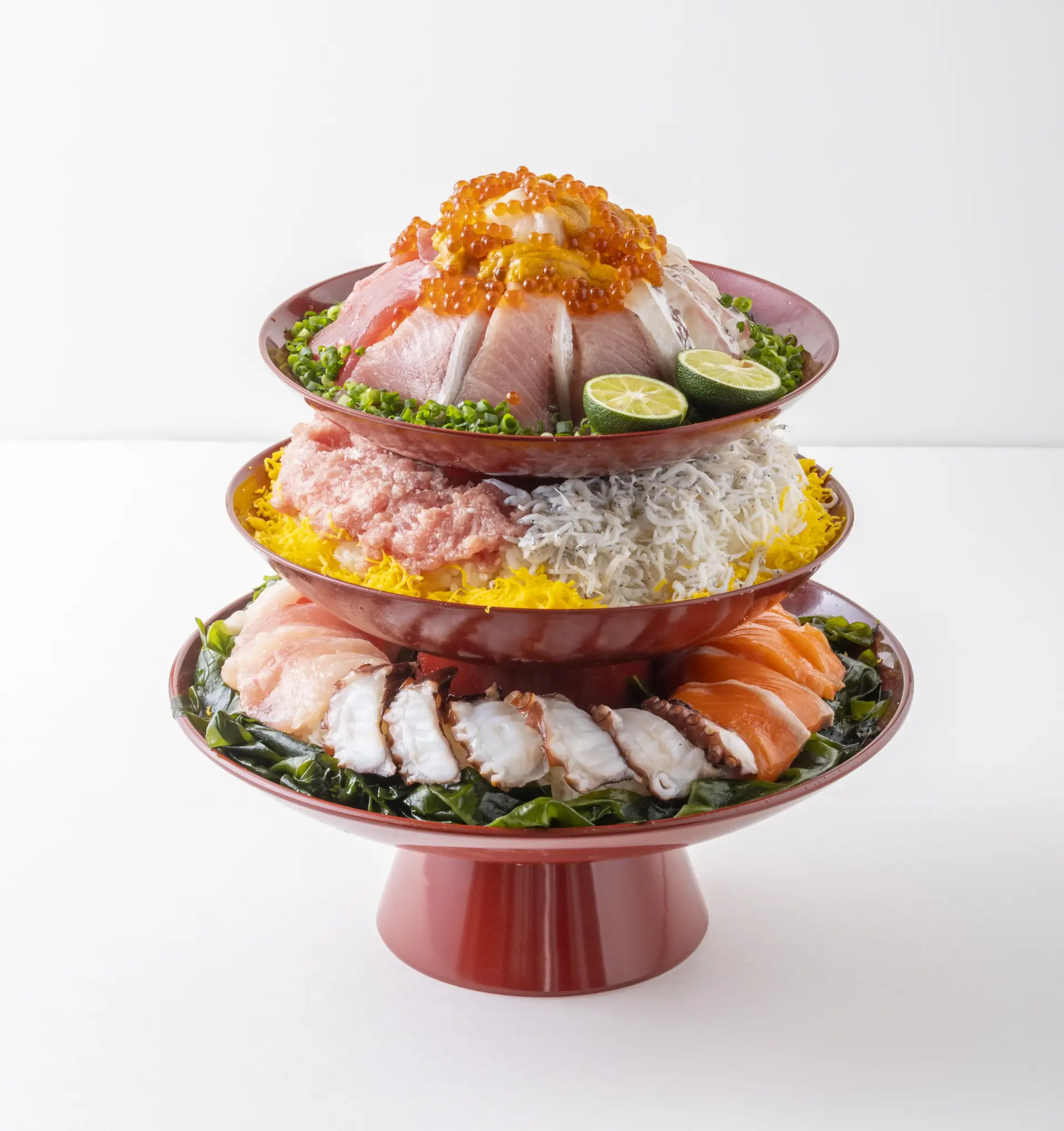
The massive Kurukuru Oouzu Kaisendon, a seafood bowl meant for four to five people.
The seafood, infused with the delicate sweetness of fresh sashimi, pairs perfectly with the rich umami of yellowtail and sea bream. After the meal, visitors can explore the facility’s collection of over 2,000 products, including specialty sweets like sweet potato soft-serve, as well as a vast array of Tokushima’s finest goods.
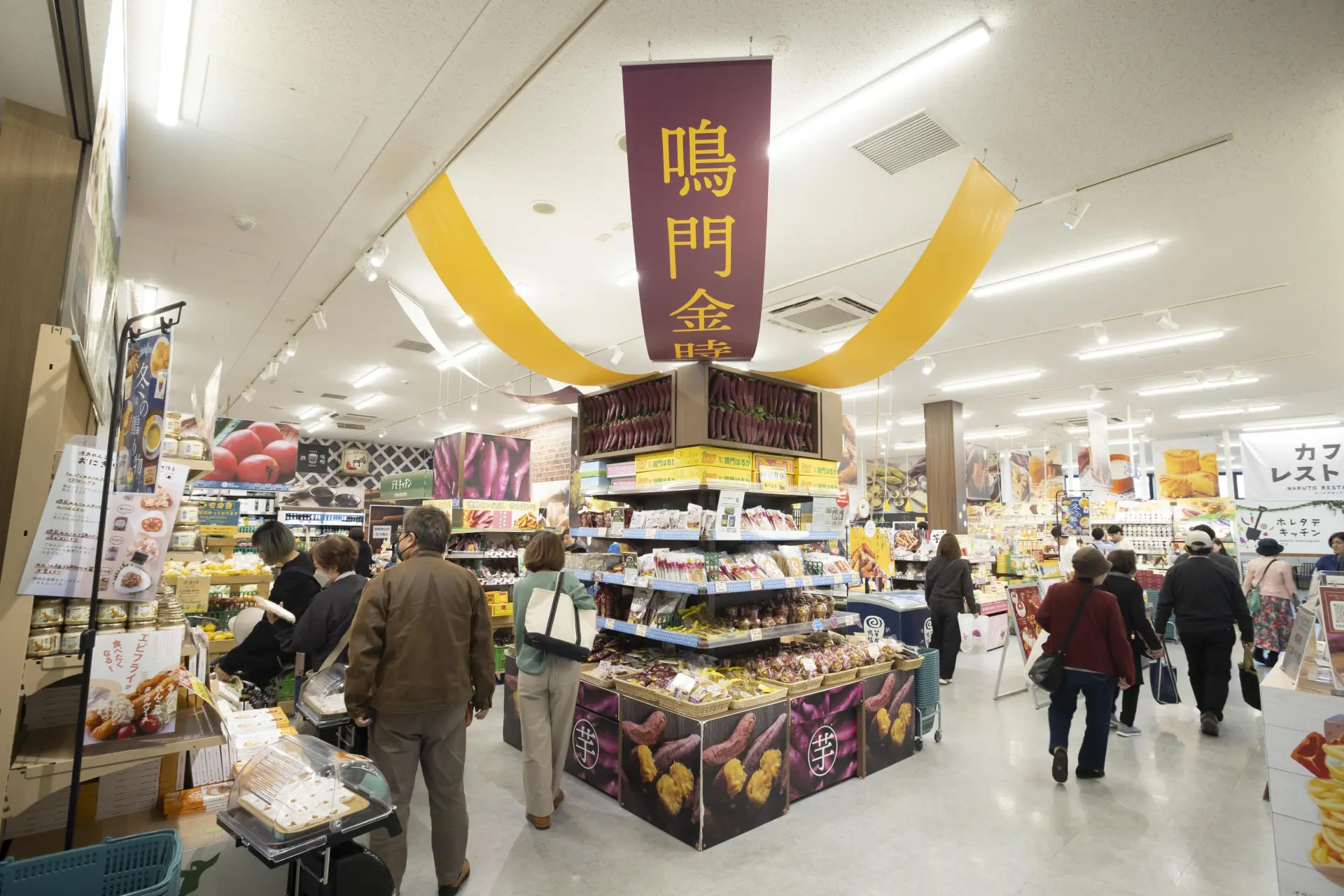
An in-store sales section lined with the local specialty, Naruto Kintoki sweet potatoes.
Basic Information
- Name in Japanese
- 道の駅 「くるくる なると」
- Address
- 338-1 Kanitano-koshi, Bizenjima, Otsu-cho, Naruto City, Tokushima 772-0042
- Phone
- 088-685-9696
- Access
- 5-minute drive from Naruto IC
- Hours
- 9:00–17:00
- Closed
- Open year-round
- URL
- URL
15:00 – Pilgrimage Experience in Traditional Henro Attire
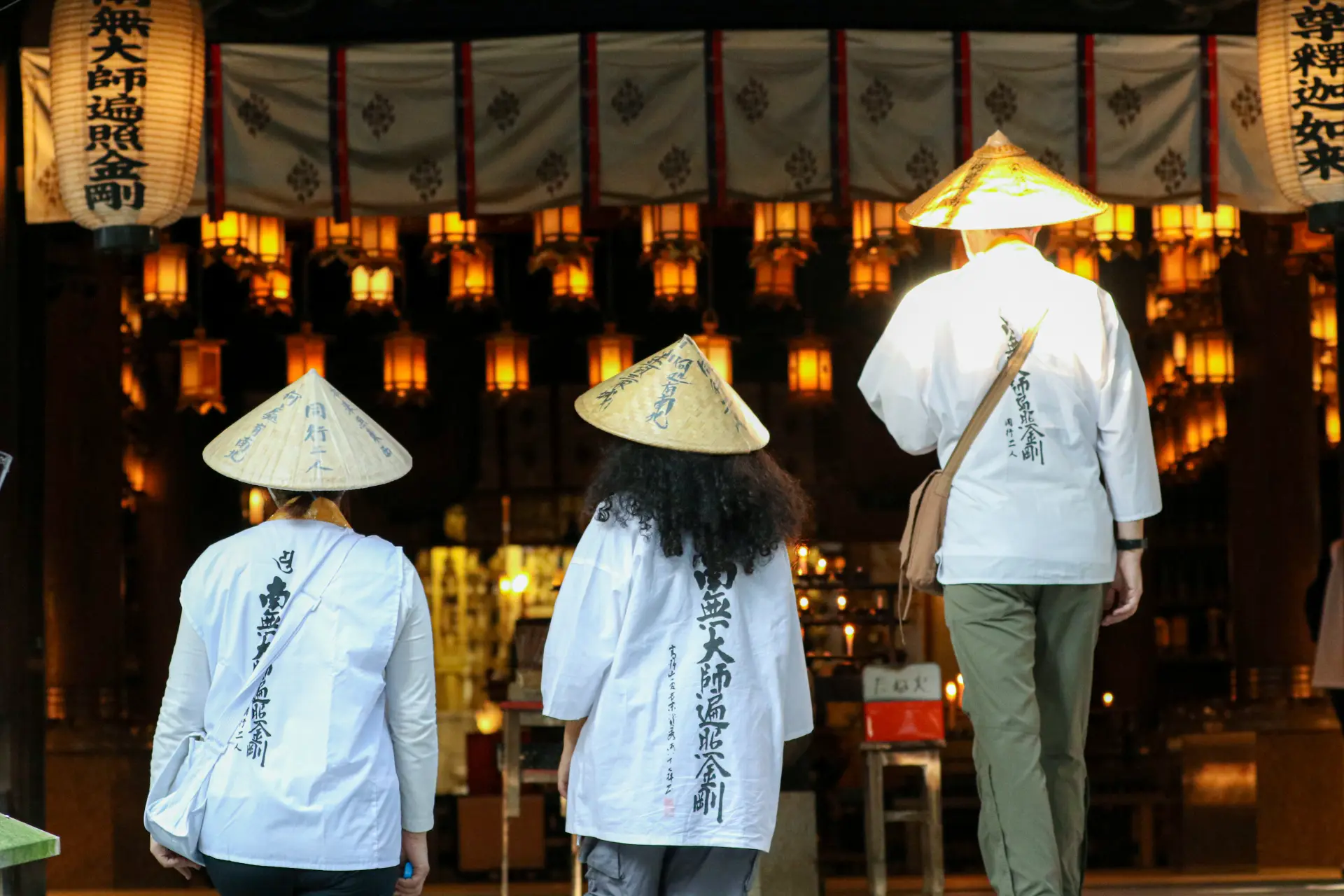
A sacred temple enveloped in a solemn atmosphere. These temples are revered as sites where Kobo Daishi (Kukai) is believed to have trained.
A 15-minute drive from Kurukuru Naruto takes you to Ryozenji, the first temple of the Shikoku Pilgrimage. The Shikoku region is home to Ohenro, a pilgrimage that dates back over 1,200 years to the Heian period. Originally a form of ascetic training for Buddhist monks, it later became a spiritual journey for laypeople, offering a chance to pray for deceased loved ones, seek purification, or simply find solace away from worldly concerns.
A unique aspect of Ohenro is “osettai,” the tradition of local residents offering hospitality to pilgrims without expecting anything in return. This spirit of generosity, combined with the pilgrimage’s deep spiritual significance, continues to draw visitors from Japan and beyond.
As the starting point of this sacred route, Ryozenji is where most pilgrims begin their journey. Before entering, visitors attend a short lecture by an Ohenro guide, who explains the history, duration, and cultural significance of the pilgrimage.
After the lecture, it's time for a hands-on experience. Visitors dress in traditional pilgrimage attire, including a white robe (hakui), a stole (wagessa), a walking staff (kongozue), and a woven hat (sugegasa). Finally, they write their names on a votive slip and offer it at the temple, just like real pilgrims do.
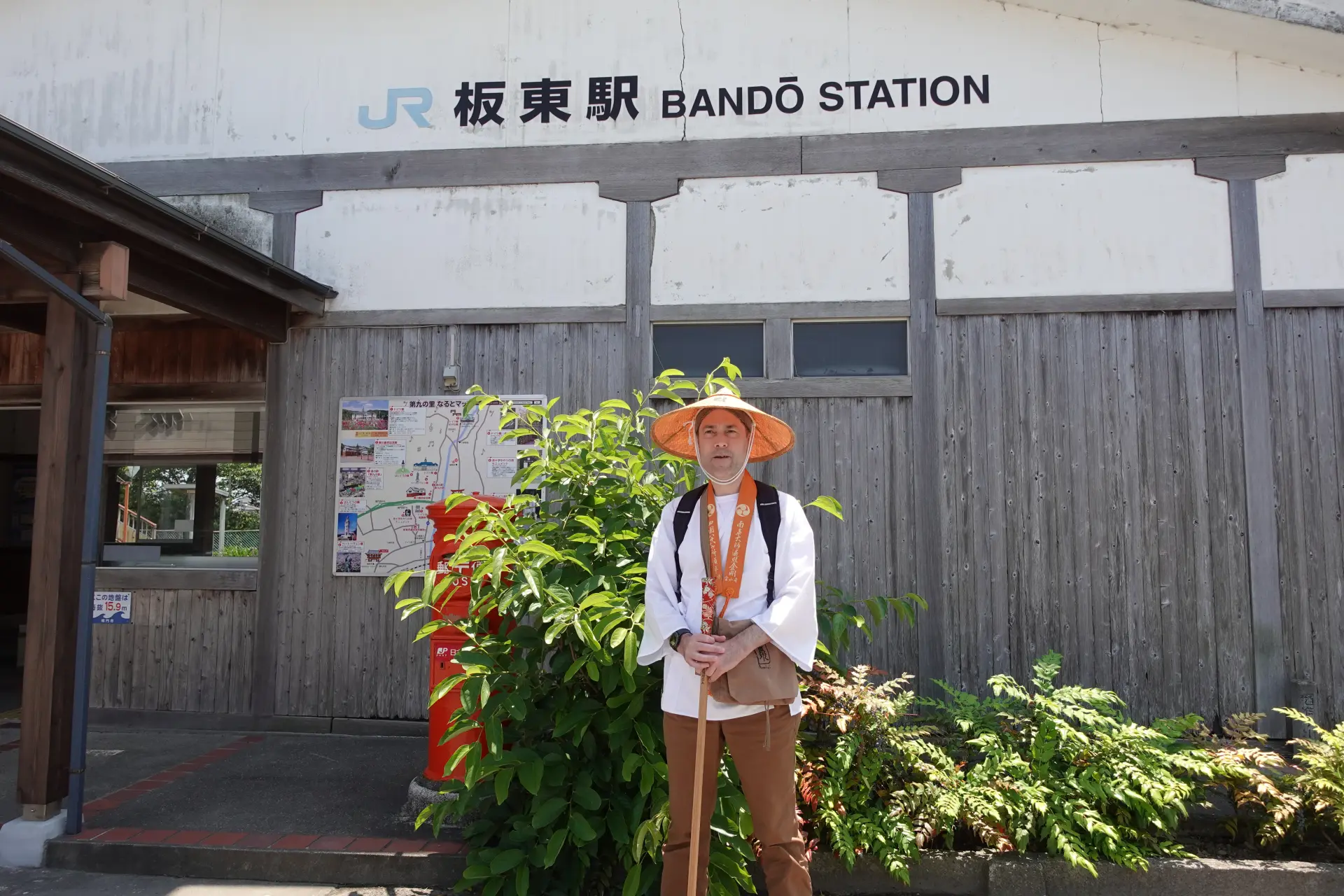
Visiting a sacred temple in traditional Ohenro attire.
Dressed in the sacred attire, visitors experience a deeply reverent atmosphere while worshiping. Guided by an expert, participants learn the proper way to pay respects at a Buddhist temple, gaining insights into Japan’s religious customs and spiritual traditions. The experience instills confidence in visiting other temples in the future.
Basic Information
- Name in Japanese
- お遍路衣装でお参り体験!
- URL
- URL
Wrap-up
The journey through Kamikatsu reveals a town where sustainability is embraced naturally, without pretense or rigidity.
Japan’s traditional way of life has long been rooted in sustainability—valuing resources, minimizing waste, and passing down wisdom through generations. Kamikatsu stands out for its ability to uphold these age-old traditions while seamlessly integrating modern technology and innovative ideas. This journey is not just about gaining knowledge—it’s about experiencing firsthand the essence of sustainable living. Why not set out on your own journey to discover the charm of a mindful, eco-conscious lifestyle in Tokushima?
Check also...
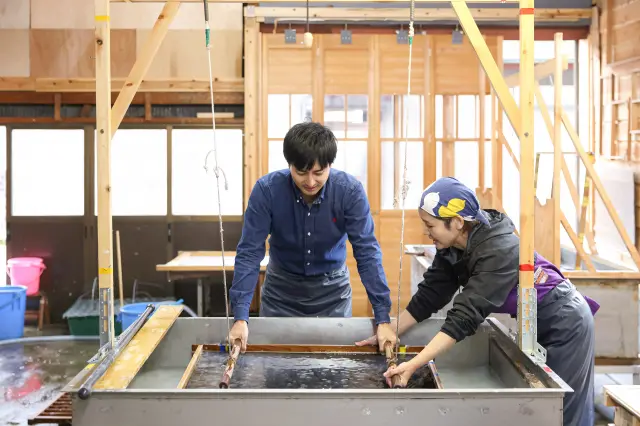
Fukui: A Journey to Experience Japan’s World-Class Craftsmanship
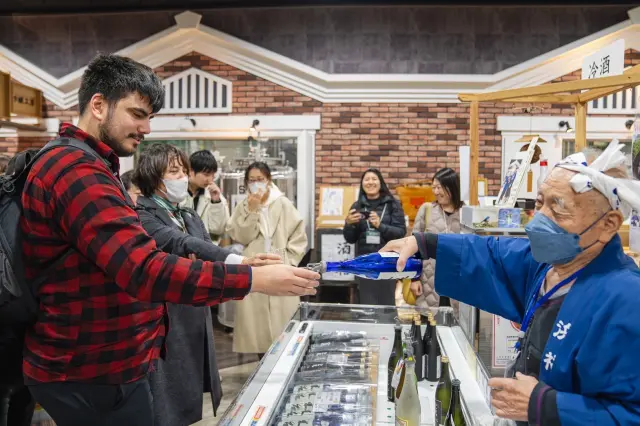
Hyogo: A Journey in Search of Japan’s Finest Sake

Mie: A Journey to Experience the "Ama Culture" Living Along the Beautiful Ise-Shima Sea
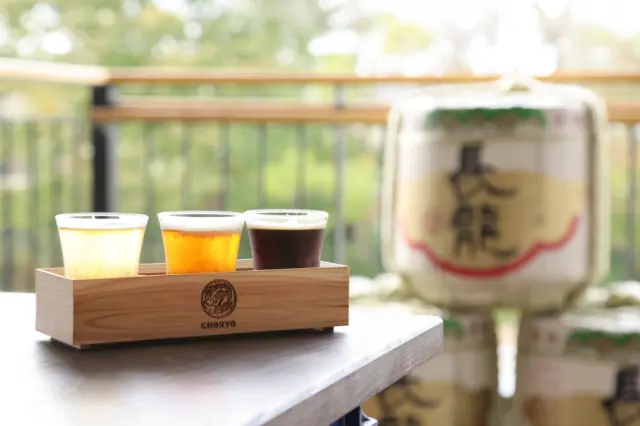
Nara: A Journey Through Its Ancient Fermentation Culture
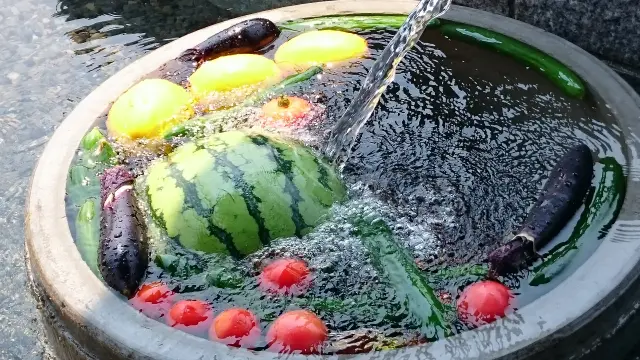
Shiga: Days Steeped in Nature and Blessed Waters Along Lake Biwa
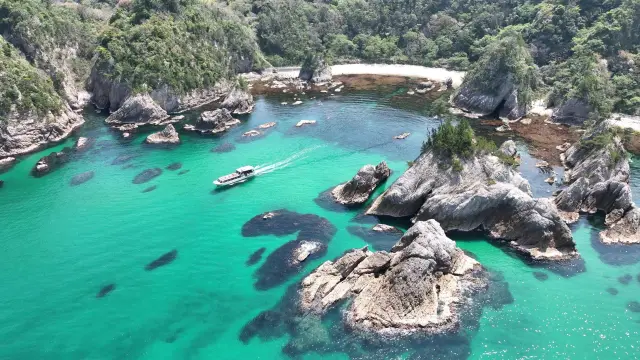
Tottori: A Journey to Unwind in the Majesty of Nature at San’in Kaigan Geopark
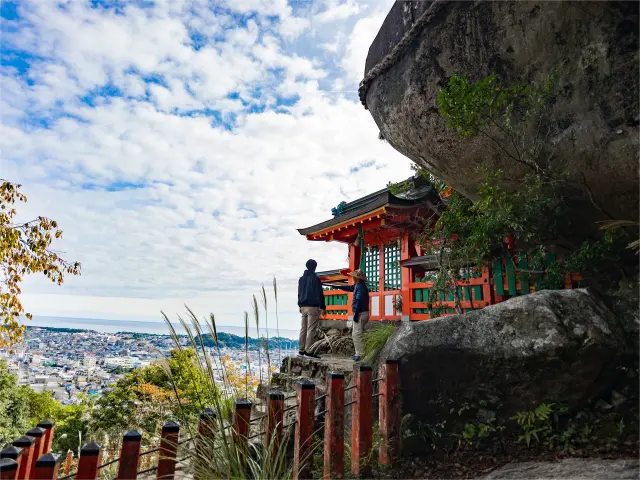
Wakayama: A World Heritage Site and Journey of Deep Mystique at the Kumano Kodo

